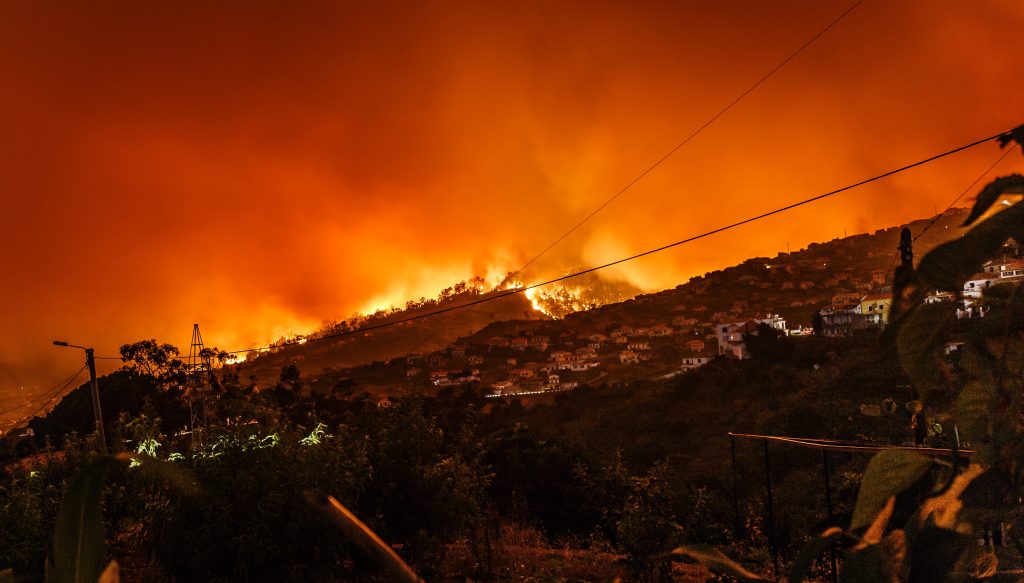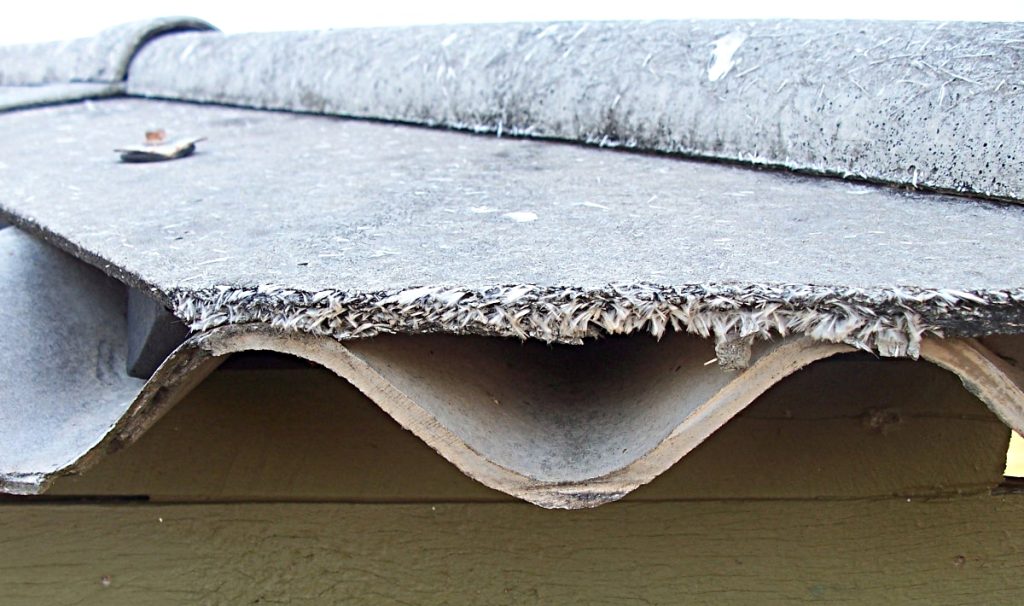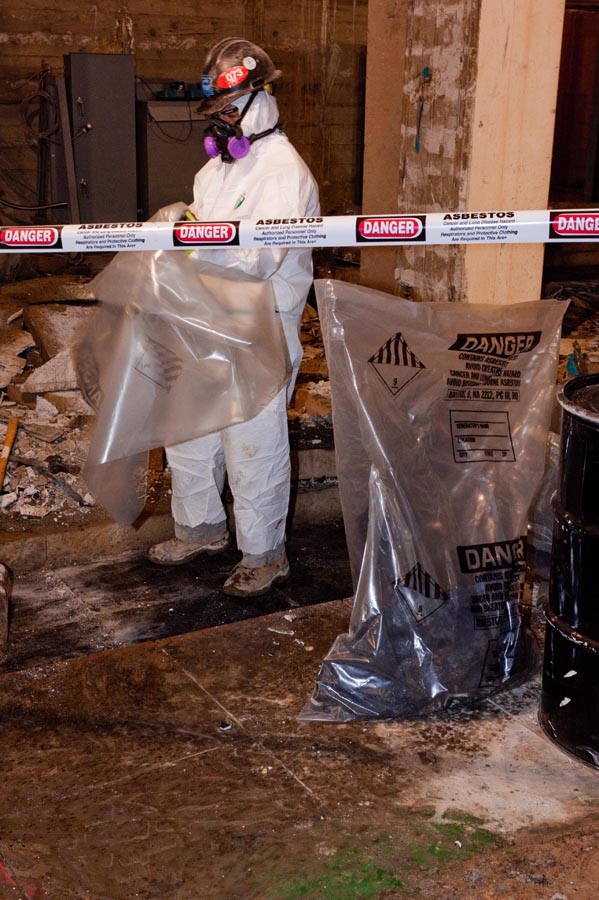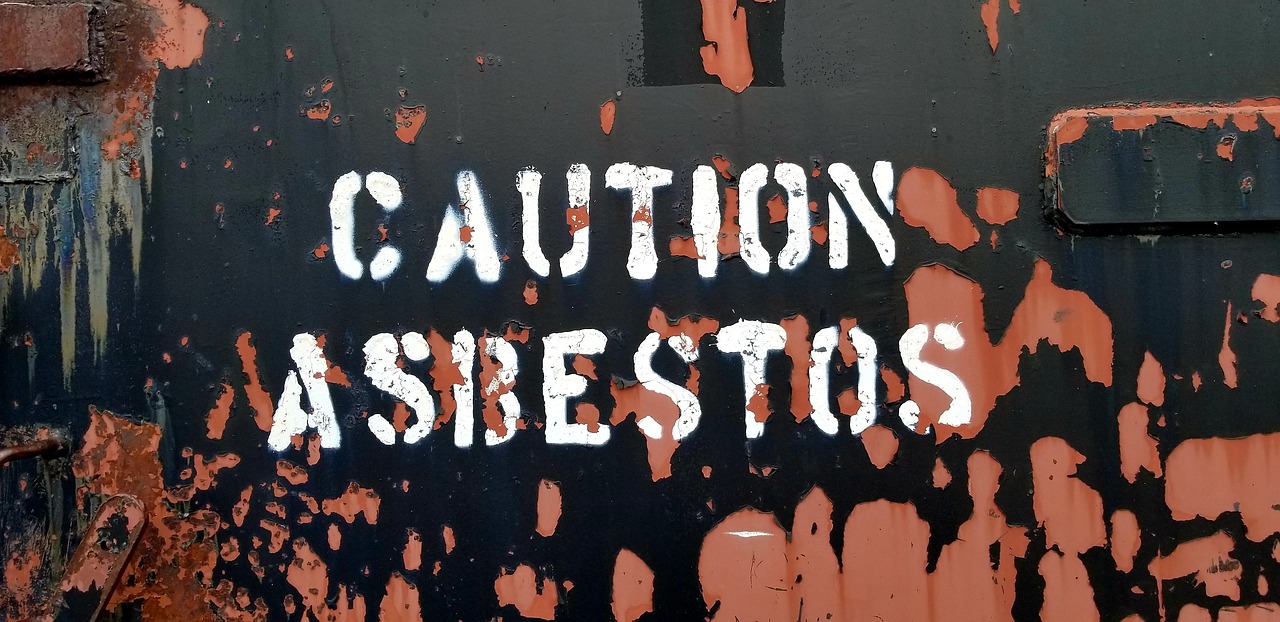Welcome to our blog, where we strive to provide valuable information and resources to our readers. Today, we are honoured to feature a guest blog post provided by Sarah Walker, the Outreach Coordinator of Mesothelioma.net.
Natural disasters such as wildfires, floods, earthquakes, or hurricanes have a devastating impact on communities, and beyond the immediate dangers they pose, they can also lead to the spread of hazardous materials, such as asbestos. Understanding how to safeguard oneself from asbestos exposure, especially in areas where older buildings containing this harmful substance may be destroyed, is crucial. It is vital for residents to be aware of the presence of asbestos before a disaster strikes and to entrust the cleanup process to trained professionals.
This article will guide us through the ways in which natural disasters can result in asbestos exposure, the risks associated with it, and the steps we can take to prevent harm. It will also address the importance of knowing the location of asbestos before a disaster occurs, as well as the necessary precautions to be taken in the aftermath.
Protecting against Asbestos Exposure during Natural Disasters
Natural disasters wreak havoc on communities, and in addition to the immediate dangers they pose, they can also result in the spread of hazardous materials such as asbestos. It is crucial to understand how to protect oneself from asbestos exposure, particularly in areas where older buildings containing this harmful substance may be destroyed. Residents should be aware of the presence of asbestos before a disaster strikes and should leave the cleanup process to trained professionals.
How Natural Disasters Lead to Asbestos Exposure
The aftermath of natural disasters often brings chaos, and one of the potential risks to communities is the destruction of buildings and the release of toxic materials into the environment.
Asbestos, a mineral widely used in construction before the 1970s, may be safely contained within a building until it is torn apart by floodwaters or destroyed by fire. Regardless of how secure asbestos may have been before a disaster, the damage incurred during the event can result in the dispersion of asbestos fibers into the air or water.
Fires: Despite its resistance to heat and fire, asbestos can become exposed during a fire when the surrounding materials burn away. The smoke and ashes emitted from fires may contain asbestos fibers, particularly when older homes constructed with asbestos are ravaged by forest fires.
 Burning building at nighttime by Michael Held on Unsplash
Burning building at nighttime by Michael Held on Unsplash
Storms and Flooding: Storms and flooding can damage various building materials, including drywall, insulation, siding, and roofing. Although water tends to keep the fibers down, the remaining debris can become contaminated with asbestos once it dries. Tornadoes, on the other hand, have the capacity to transport asbestos fibers over long distances, scattering them along their path. Hurricanes, known for their destructive nature, often lead to building destruction and flooding, causing additional damage and potential asbestos exposure.
Earthquakes: Earthquakes can be as devastating as storms if not more so, depending on their severity. Similar to storms and floods, earthquakes can cause buildings to collapse, tearing apart asbestos-containing materials and dispersing fibers far and wide.
Dealing with Asbestos Exposure After a Natural Disaster
The cleanup efforts following a natural disaster can also give rise to asbestos exposure. Damaged buildings may need to be demolished, releasing asbestos fibers into the surrounding area. Burning of scattered debris is a common cleanup method; however, this practice generates toxic smoke and ash-laden with asbestos.
How People Are Exposed to Asbestos After a Natural Disaster
Asbestos, a naturally occurring mineral, poses no harm when contained. However, once disturbed, asbestos can break apart, releasing microscopic fibers into the environment. These needle-like fibers can contaminate the air, water, and soil, leading to inhalation and ingestion.
Inhalation is the most common route of exposure to asbestos. Debris left behind after a disaster poses the greatest risk, as individuals in the vicinity may unknowingly inhale the fibers.
Once asbestos fibers enter the body, they become lodged in the tissues, causing severe damage and potentially life-threatening diseases such as mesothelioma, lung cancer, or asbestosis.
Asbestos-Containing Products That Pose Risks During Natural Disasters
 FAC-roof-sheeting asbestos By Bill Bradley/https://en.wikipedia.org/wiki/User:Billbeee
FAC-roof-sheeting asbestos By Bill Bradley/https://en.wikipedia.org/wiki/User:Billbeee
In the 1970s, the federal government implemented regulations restricting the use of asbestos. However, many older buildings still contain asbestos, as it was widely used in various construction materials, including:
- Insulation
- Roofing materials
- Siding
- Wallboard
- Joint compound
- Fireproofing and soundproofing materials
- Flooring tiles
- Adhesives
- Fireplace decorations
- Cement pipes
- Electrical panels
- Many other specialty construction products
While buildings constructed after the late 1970s generally do not contain asbestos, industrial facilities such as factories, oil refineries, chemical plants, power plants, and steel mills often have asbestos in their structures, machinery, and equipment. It is important to be aware of the potential for significant asbestos contamination during a natural disaster in these industrial settings.
Who Is at Risk of Asbestos Exposure After a Natural Disaster?
Anyone in the vicinity of older buildings containing asbestos during and after a disaster is at risk of exposure. First responders, including firefighters, rescue workers, law enforcement officers, and other emergency response personnel, face a higher risk of asbestos exposure while dealing with debris at the disaster site. Additionally, individuals involved in the subsequent cleanup efforts, including residents themselves, are also susceptible to asbestos exposure.
Knowing the Location of Asbestos Before a Disaster Strikes
Preparation is key to ensuring the safety of families before a disaster occurs. Every family should have an emergency plan, evacuation routes, and ready-to-use emergency kits. To protect your family from asbestos exposure, it is essential to be aware of its presence and the likelihood of contamination. For instance, if you live near an industrial plant, a natural disaster could potentially release not only asbestos but other toxic materials as well. Have a well-defined evacuation plan to quickly move away from such hazardous areas.
It is also crucial to determine whether there is asbestos in your home. While older building materials may be safe under normal circumstances, they can become damaged during a disaster, increasing the risk of harmful exposure. Identifying areas where asbestos is present and taking necessary steps for professional abatement or secure containment is important. This knowledge will also be valuable in assessing the extent of asbestos-related risks if your house sustains damage.
Preventing Asbestos Exposure After a Disaster
Ensuring personal safety during a disaster is only the initial step. It is equally important to be cautious of hazards in the aftermath, including asbestos.
If your home is destroyed or nearby buildings are damaged, refrain from disturbing the debris until professionals can assess and confirm its safety. This precaution is especially crucial if there is a suspicion of asbestos contamination.
In case of uncertainty, it is safest to allow trained professionals, experienced in working with asbestos, to evaluate and handle the situation if asbestos is found. If you can visually identify asbestos-containing materials on your property or within your damaged home, report it to your local environmental and public health agency or solid waste management authorities. They will provide guidance on the appropriate course of action. Avoid taking anything from the damaged area, including clothing that may have been contaminated with asbestos.

Asbestos abatement by Oregon Department of Transportation https://commons.wikimedia.org/wiki/File:Asbestos_abatement_(5392910701)
While it may be legally permissible for homeowners to clean up asbestos in some locations, it is strongly discouraged. If you decide to undertake asbestos cleanup yourself, ensure that you wear appropriate safety gear, including a respirator specifically designed to protect against asbestos fibers. Familiarize yourself with the laws and regulations applicable in your state. Wetting asbestos-containing materials is important to prevent the release of fibers into the air, and all asbestos materials should be disposed of in accordance with state or local regulations.
When participating in cleanup efforts, wearing an appropriate respirator approved by the National Institute for Occupational Safety and Health (NIOSH) is crucial. Respirators with HEPA filter cartridges or NIOSH ratings of N-100, P-100, or R-100 are suitable for working with asbestos. Additionally, using other protective gear such as gloves and protective suits is advisable when dealing with areas potentially contaminated with asbestos.
Preparing for Asbestos in Different Types of Disasters
Every natural disaster presents unique risks for asbestos exposure. It is essential to understand the specific dangers associated with the types of disasters that may occur in your area and learn how to handle them.
Hurricanes: Hurricanes are highly destructive storms characterized by strong winds, heavy rain, storm surges, and waves. They can cause extensive damage to buildings and release asbestos fibers. These fibers can be carried over long distances, posing a risk to areas far from the storm’s center.
If you reside in coastal areas along the Gulf of Mexico or the Atlantic coast, you are at risk of experiencing a hurricane. The hurricane season typically spans from June to November, during which major storms are most likely to occur. If possible, evacuate the area in advance of a hurricane. Afterward, seek guidance from emergency authorities regarding safety information and cleanup protocols.
Wildfires
Wildfires and forest fires are common in western states, with thousands of incidents occurring annually. These fires burn millions of acres and have the potential to damage buildings, leading to the release of asbestos fibers. During and after fires, when various toxins are present in the air, wearing a respirator is especially important.
Wildfires not only release asbestos from damaged buildings but also spread fibers over vast areas. Even if your home remains undamaged, you may still face the risk of asbestos exposure through ash carried by the wind from other areas. Use a respirator and wet dust surfaces while cleaning.
Flooding
Floods rank among the deadliest natural disasters due to their unpredictability and the tendency of people to underestimate their risks. It is crucial to be aware of the possibility of flooding in your area. Floods can occur after storms or heavy rainfall, particularly following a dry period.
If a flood is anticipated, evacuate the area promptly. Upon returning, exercise caution in areas where asbestos might be present, and take appropriate measures such as using respirators when cleaning up debris.
Earthquakes
Earthquakes can cause immediate destruction by toppling buildings and can also lead to subsequent damage when weakened structures collapse or tsunamis affect coastal regions. The western coast of the United States is particularly prone to earthquakes.
Know the earthquake risk in your area and follow all safety guidelines during such events. The danger of asbestos exposure following an earthquake arises during the cleanup process when handling debris and damaged buildings. Prioritize the use of respirators and consult authorities to determine when it is safe to begin the cleanup.
Tornadoes:
Tornadoes are powerful storms that can cause widespread destruction within a confined area. Unpredictable in their path, they can leave some areas unaffected while demolishing neighboring homes.
Be aware of tornado season and the likelihood of storms in your region. Tornadoes are most common in the Midwest, the eastern Great Plains states, and the Southeastern United States. They occur most frequently between March and June. Seek appropriate shelter during tornado warnings.
Even if your home remains intact after a tornado, the winds associated with the storm can transport debris containing asbestos to your area. Only initiate cleanup activities when it is safe to do so, and employ suitable protective gear if asbestos is present.
National Resources for Natural Disasters
Each state should have designated emergency response contacts and plans to help residents prepare for and recover from natural disasters. Federal and national resources can also provide valuable assistance in ensuring safety during the recovery and cleanup processes:
U.S. Environmental Protection Agency (EPA): The EPA responds to emergencies that pose risks to the environment and human health. It offers resources and information to help individuals stay safe in the presence of contaminated debris.
Federal Emergency Management Agency (FEMA): FEMA provides planning resources, practical assistance, and financial support following natural disasters.
American Red Cross: The American Red Cross offers disaster relief services in various situations. Contact them for immediate assistance and long-term support.
If you encounter debris after any type of disaster that may contain asbestos, treat it as a hazardous material. Contact the appropriate authorities and allow experts to handle the cleanup. Meanwhile, ensure that you and your family have a safe place to stay in an uncontaminated area.
For more information concerning asbestos exposure and finding treatment, visit Mesothelioma.net.
Afterword from exci – The Smoke Alarm for the Bush
Natural disasters can have a devastating impact on communities, and it is crucial to understand the risks associated with asbestos exposure in these challenging times. To further expand your knowledge on the impact of wildfires on asbestos structures, we invite you to visit exci’s website and explore the blog post titled Impact of Wildfires on Asbestos Structures.
Gabrielle Tylor
exci pty ltd
The Smoke Alarm for the Bush
22 July 2023

